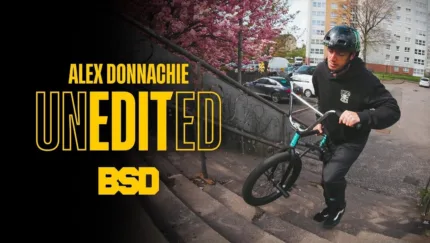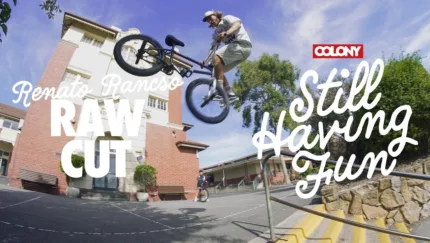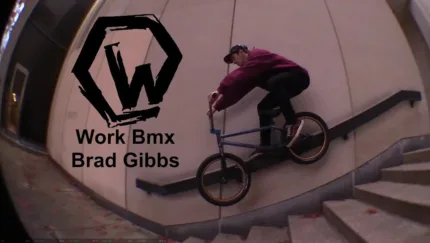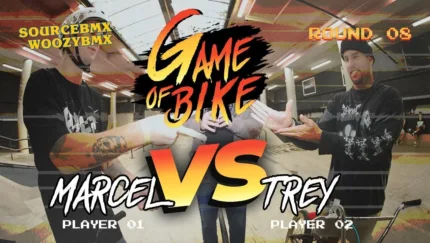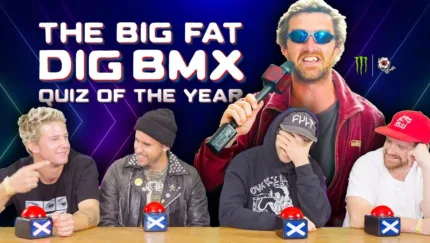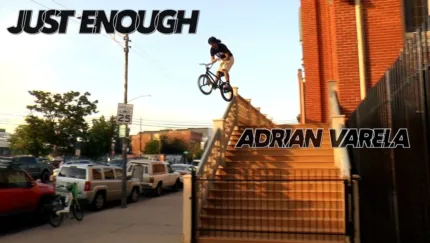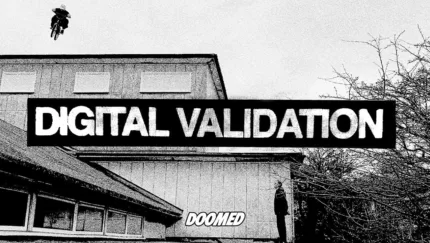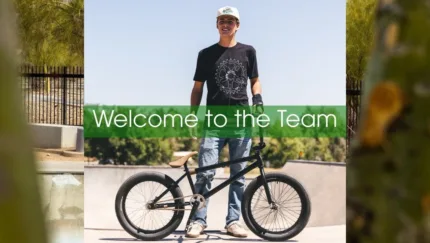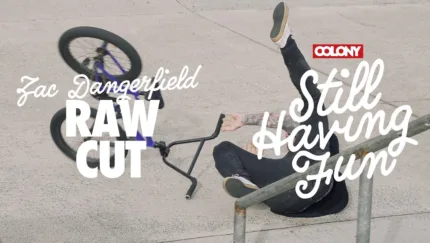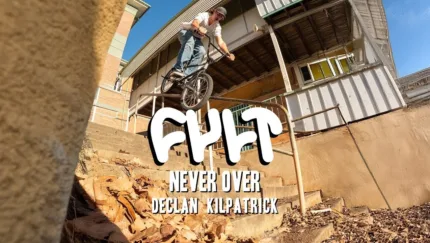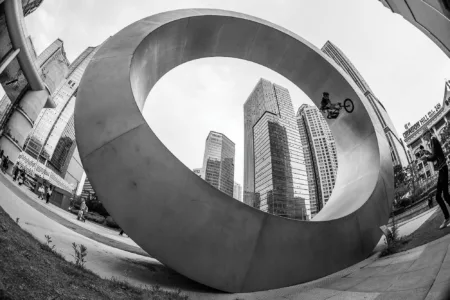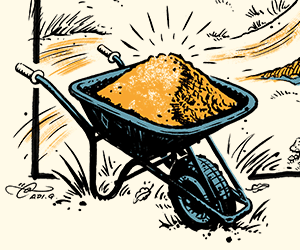
The Most Influential* BMX T-Shirt Companies of the 80's & 90's - PART 1
*Well, some of them...
Compiled and written by Paul Covey
The T-shirt revolution began as an underground movement in the late 80s and early 90s, going on to become a fundamental component of BMX lifestyle. As a young adult with a limited disposable income, purchasing a T-shirt was a small but significant way for me to support the companies I was into and represent BMX to the world. During this era I remember flipping through pages of BMX magazines and seeing advertisements for dozens of companies whose main product was the simple silk-screened T-shirt.
Originally a one-piece undergarment designed in the late 19th century as a convenient covering for laborers in hot environments and issued by the U.S. Navy for sailors in early submarines during the Spanish-American War, T-shirts eventually became a popular bottom layer of clothing for agricultural workers, due in part to their inexpensive construction and ease of cleaning. Further popularized by Marlon Brando, who donned one in the 1951 film “A Streetcar Named Desire,” by the late 1960s the T-shirt became a common symbol of the modern era and a mainstream method of advertisement, protest, and self-expression.
This overview (part one of two) is by no means meant to be an exhaustive list of all the T-shirt brands that have existed in BMX, but a brief review of some of the more influential rider-owned companies that have graced us with their artwork and innovative designs from the mid-eighties to mid to late nineties. Please feel free to chime in below or on our facebook/instagram with any companies or designs that you feel were left out or worth including, and consider supporting rider-owned brands the next time you make a clothing purchase.



2/B Homecooked Garments
2/B Homecooked Garments was the brain-child of and fun-loving East Coast riders Hal Brindley and Steve Buddendeck. Armed with truck stop, bowling alley, and kitchen utensil inspired clothing, Hal and Steve spear-headed one of the earliest well known rider-owned clothing brands. 2B shirts, hats, and stickers could be spotted on riders at NBL (National Bicycle League) events and in tiny, humorous adverts within the pages of BMX Plus! and Go: The Riders Manual throughout the early 90s.
Hal and Steve went to races, organized incredibly simple but fun contests at various skateparks, rode their bikes, ran a campaign to free James Brown (whose imprisonment at the time warranted the phrase “Soul Behind Bars”) all while making some really cool t-shirts that fit the underground BMX scene of the day perfectly. Various Plywood Hood flatland masters in Pennsylvania were noted for rocking 2B gear, which at the time, was a stellar endorsement. Rising east coast vert shredder, Leigh Ramsdell, was on the Pro team and making big moves at national events. At one point Hal and Steve even purchased and re-stickered some overstock BADD & CO race frames to sell under the 2B banner in a very Dirt Bros like fashion.


In mid-1992, shortly after the demise of Go Magazine, the duo took a major financial risk and printed 10,000 copies of a massive, one-off zine entitled: “The Cookbook.” Every single rider on the TREND (now Empire BMX) mailing list received at least one copy absolutely free. Keep in mind that this was way before social media, and with no real BMX magazine coverage from a rider’s perspective at that point, “The Cookbook” was an encouraging and welcomed DIY effort. An honest appeal was made to raise funds for a second issue, and I distinctly remember sending a few bucks in for support. I swiftly received a hand written thank-you letter from Hal in the mail along with a 2B patch that was sewn onto my favorite hat, (which my friend’s dog later devoured.)
By 1994, Buddendeck had begun working for the NBL, shooting photos and writing articles for the growing racing organization’s newspaper (today he runs Cinema and Verde). Additionally, a name dispute with a hip-hop fashion company from New York forced Hal to abandon the 2B brand altogether and start up his next endeavor: Play Clothing.


Play Clothing
Play Clothes had some of the same flavor of 2B Homecooked, but with more subtle and refined style. Inside jokes, grin-inducing catch phrases and super-rad designs by Chris “Roni” Hargrave also made Play Clothes quite popular among BMX and Freestyle junkies of the mid 90s. Leigh Ramsdell would become Hal Brindley’s new partner in crime and introduced his own brand, Useless Clothing (see The Crandall shirt below). It’s worth mentioning that Zack Phillips, who had already started a small parts brand known as Kink, was also brought on board to help out at Play’s North Carolina offices. Play also boasted a large roster of incredible riders including Ryan Nyquist, Kris Bennet, Leif Valin, Todd Lyons, and Mike Forney. In the midst of all this, Hal and Leigh put together possibly the best commercial ever in a Props video magazine – a definite high water mark for humor in BMX that reminded us all to have fun and avoid taking ourselves too seriously.


After a few more years, Hal, desiring to pursue a career as a wildlife photographer, would go on to sell Play to an aspiring Washington D.C. businessman named Rex, and the brand pretty much disappeared after that. Recently, Brindley and Ramsdell launched a Kickstarter funded re-issuing of the more popular t-shirt styles from the 2B and Play catalogue, to an overwhelmingly great response. Hal even uploaded a digital version of “The Cookbook” on Issuu.


Poor Boy
Poorboy was based out of the greater Dallas-Fort Worth area, and to the best of my recollection, was introduced to the early 90s BMX world with an 1/12 page ad in one of the last issues of Go: The Riders Manual. From that humble ad, featuring the “Childish Pranksters of America” design in the back pages of Go, Poorboy would slowly become one of the top three most successful BMX T-shirt companies of the 90s. T-shirts, hoodies, number plates, chain wallets, jeans, shorts, shin pads, three acclaimed videos, and the briefly popular gyro hood were among the much sought-after items in Poorboy’s inventory. An all-star team, (that at one time or another included Joe Rich, Chad Degroot, Ed Koenning, Dave Osato and Stuart King) paired with up-beat designs, clever logo spoofs, and bright colors helped move merchandise off the Sandbox Distribution warehouse shelves and into the closets of thousands of BMXers.
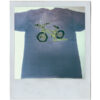
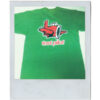
Finding strong support in their home state of Texas, a mainstay at every single B.S. Contest, and downright en vogue at BMX tracks across the country, Poorboy was a growing brand that showed no signs of slowing down. Magazine guru and all around good-guy, Mark Losey even managed to strategically place some Poorboy stickers near the phone and refrigerator in one of the Real World houses on MTV, giving the brand some mainstream exposure. Once Sandbox Distribution was formed, they began to handle merchandise from other start- up T-shirt companies like Stew Johnson’s Scum Clothing , King Bikes, the new in-house brand, Allied, and would eventually develop Mutiny Bikes in 1998 as a full-on, legit BMX frame and parts company. As big money corporations moved into BMX in the wake of televised competitions, Mutiny raised the pirate flag and went on to produce affordable, innovative frame designs, several highly regarded videos, and support riders like Joe Simon, Danny Hickerson, Neil Harrington, Walter Perringer, Ojay Juarez, and a fearless kid from Tyler, Texas named Morgan Wade. “Penniless and Proud” was the original mantra and Steev Inge was the man at the helm of a tightly run ship before he left it all behind to develop and manage a Christian outreach skatepark/youth center in Missouri and eventually become the pastor of Mystery Church in Downtown Joplin.
(Editors note: Anyone remember that Taj X Poorboy X DIG controversy?)


Little Devil
Although officially started back in 1995, Little Devil clothing exploded on the scene in 1998 and had everyone in BMX buzzing. This was due, in no small part, to Daryl Nau’s incredible second video, Seek and Destroy. An unexpected but fortunate collaboration between Nau and Little Devil front man Derek Adams produced a video that is still talked about nearly 2 decades later and helped launch one of the most beloved brands in BMX history into the spotlight. The video itself contained a brief Little Devil commercial and a crazy riot/concert/crash section, but the cast of East Coast trail and rail slayers were the real showcase of this maximum velocity offering that marked the beginning of a new era in BMX. Standout sections came from Garret Byrnes and Van Homan, but the entire video had a great vibe and never failed to get me psyched to go ride. And... I can’t write about Little Devil without also mentioning the next video, Criminal Mischief. Criminal Mischief was another strong offering with an amazing team of riders, and Van Homan’s double song section is considered to be prerequisite viewing for anyone who picks up a BMX bike.


In between producing epic videos, Derek also managed to design and sell a lot of clothing, start a shoe company, Orchid Footwear, and had Nate Wessel build one of the sickest wooden bowls ever constructed inside their warehouse. While all this was going on, a funny MTV program called Jackass was being filmed in the same area, and Ryan Dunn (RIP), longtime friend of Adams, was often seen wearing LD apparel on the show, bringing the attention of a global audience to the Pennsylvania brand. When I think of Little Devil, I think of an incredibly iconic logo, killer designs, irreverent ads, and a team of guys that redefined BMX street riding.


Time marches on, and rather than letting the brand get stale, Derek decided to kill off the Devil a few years ago, eventually deciding to stick closer to home to develop his local BMX scene at a grass-roots level. There have however been verified rumors of the company resurrecting, and new Little Devil designs keep popping up on social media, so keep your eyes peeled.
UNDERGROUND PRODUCTS - UGP
UGP was started in 1986 by Florida’s Ron Bonner who was a freestyler, ramp rider, and early BMX entrepreneur. Influenced by Freestylin’ Magazine, Andy Jenkins and Jeff Tremaine, Ron started Underground Productions in his parent’s garage with $500. He began to place ads in Go: The Riders Manual and BMX Plus! encouraging kids to send in $2 for stickers and information. I still have an early UGP ‘catalog’ that Ron mailed out back in 1991. It was a photocopied and stapled product/price list on plain white paper with a neon green front page sporting the infamous “monkey face” logo that could be seen at races and jumping contests throughout the early 90s. Forgoing the purchase of an automobile, unlike most teenagers, Ron stayed focused and continued to reinvest in UGP.


In addition to high-quality t-shirts, UGP also produced number plates for racing, shin pads, jeans, shorts, and hoodies that effortlessly incorporated a groovy, artistic aesthetic. Constantly changing designs, cutting-edge artwork, memorable logos and quality materials embodied the brand from start to finish. Their “Disco” knock-off design of the “Crisco” logo became a personal favorite of mine and was always a conversation starter. Every rider I knew in the 90s regularly wore at least one UGP shirt, (even if they were sponsored by another t-shirt company).


Rob Nolli, Taj Mihelich, Dave Friemuth, John “Luc-E” Englebert, Joey Garcia, Chad Degroot, Aaron Benke and even skate legend Jamie Thomas were all on the official team at one point. Ron recruited flatland extraordinaire Kip Williamson, and the two were able to produce a string of promotional videos, including the immensely popular FACE VALUE, which captured impressive sections from all the aforementioned riders. After having held an early dirt jumping contest in 1991 appropriately titled “The UGP Flying Circus,” Ron also started “The Roots Jam,” a DIY contest series held annually in Orlando that became highly regarded by both riders and the industry by the early 2000s.

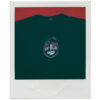
Bonner, often ahead of the curve, sold UGP around 11 years ago in order to focus on his new parts brand, The Shadow Conspiracy, and the growing Sparky’s Distribution. Sparky’s currently handles not only The Shadow Conspiracy, but also Subrosa, Sputnic, Mutiny, Bone Deth, Tempered, The Make, and Banned. According to their website, UGP is actually still around and still producing clothing for wake boarders and even some generic BMX parts. But the current company shares almost no semblance to the respected brand that Ron once developed.
Check out PART 2 of the article right here.
Previous
ETNIES IN VEGAS - Photo Journal
Hammer Time in The Desert With Nathan Williams and Aaron Ross
Next
The Most Influential BMX* T-Shirt Companies of the 80's & 90's - PART 2
Remembering Lord Clothing, Scum, Anarchic Adjustment and many more...
Related Content
















